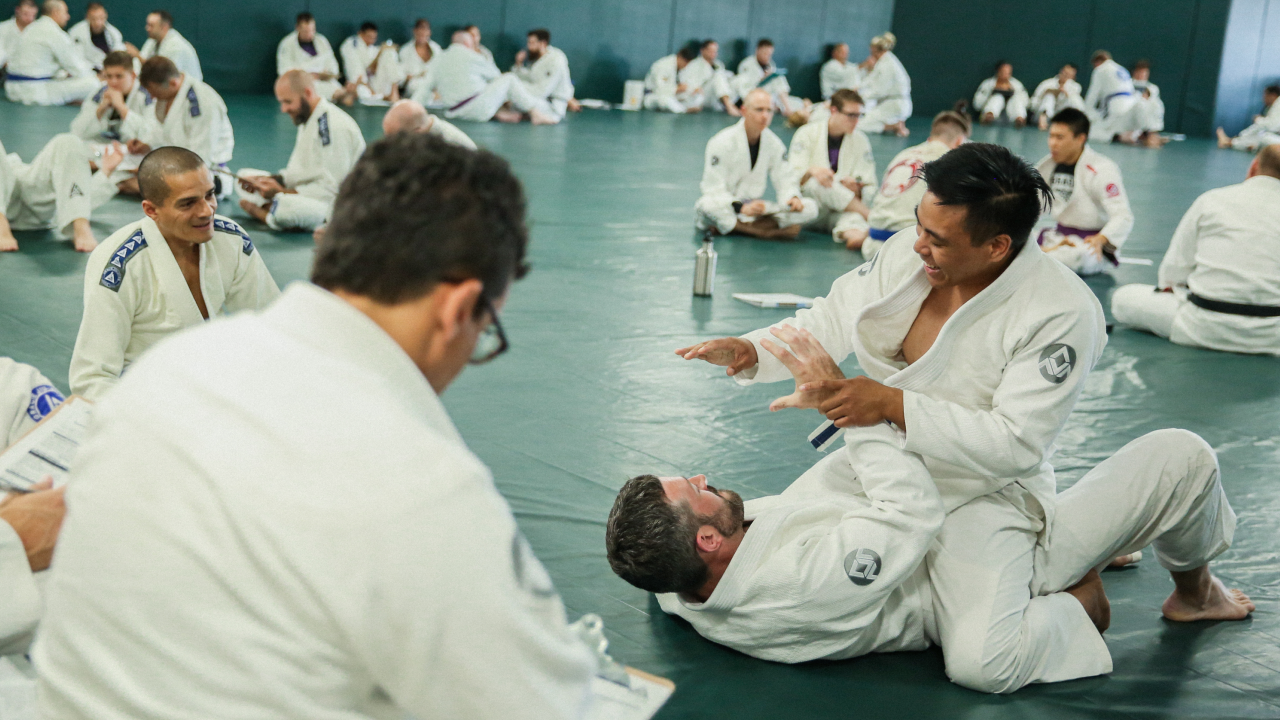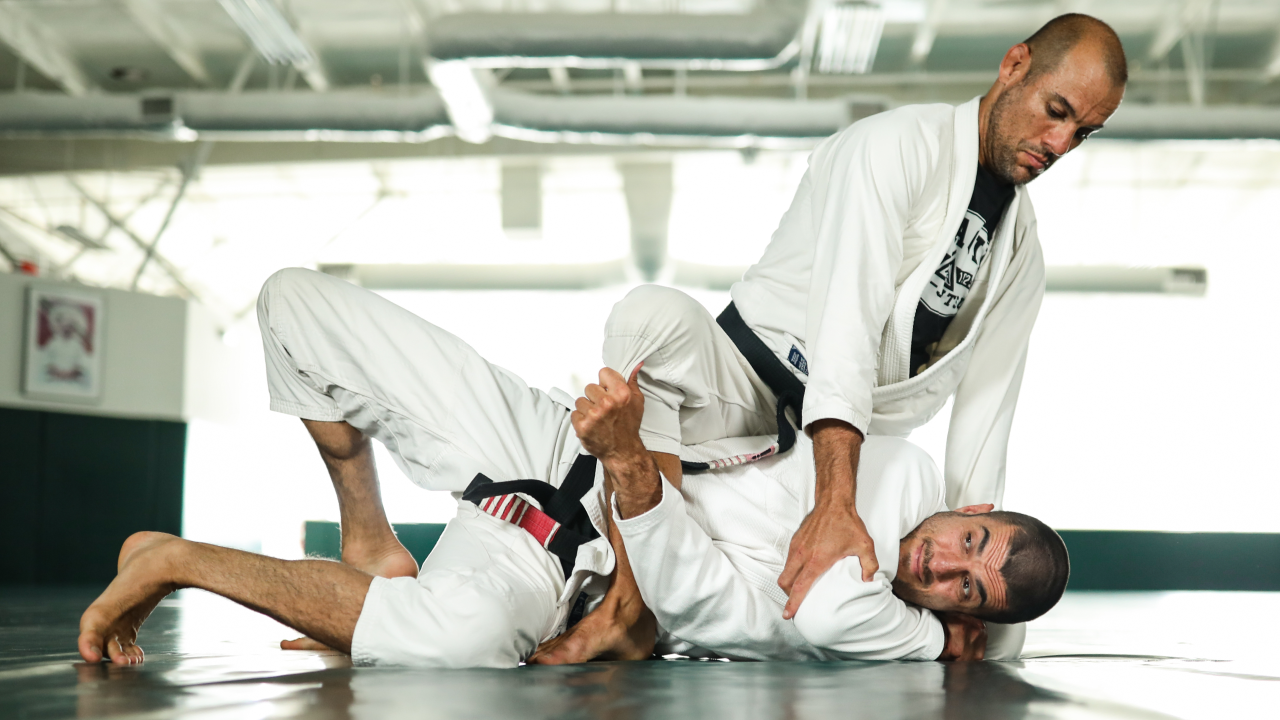Growing Your Skillset – From Beginner to Black Belt
Matt Thornton, the founder of SBG International and one of the most well-respected jiu-jitsu coaches in the Pacific Northwest, recently sat down to interview Henry Akins. Henry has been a major figure in the jiu-jitsu community for decades. He was just the third American to receive his black belt from Rickson Gracie, arguably one of the best Brazilian jiu-jitsu fighters to ever live, and Henry has spent years sharing the wisdom that he learned from Rickson with students of jiu-jitsu around the world.
In the blog post, the first in a three-part series, we’ll go over some of the most interesting points from their conversation, though you can watch the entire interview by following the link above. This post will focus on the first lesson Henry teaches to new students and the skillset Henry believes students need to move on to their blue, purple, brown, and black belts.
First Lessons
When given the opportunity to introduce students to jiu-jitsu, Henry explains that he wants them to walk away with three things. First, he wants the students to understand that jiu-jitsu is a complete system for self-defense. Second, he wants them to understand that jiu-jitsu can be virtually effortless. Relatedly, the third thing he wants them to gain is an experience of the magic of jiu-jitsu.
Combinations
To give students a glimpse of how jiu-jitsu works as a complete system, Henry likes to show two or three techniques from one position that work in combination with one another. “The beauty in jiu-jitsu is not the individual techniques. It’s how everything works together.” He also likes to show combinations from different positions, including standing to instill in his students early on that, while jiu-jitsu is extremely effective for ground fighting, it works from any position. As Henry notes, virtually every fight starts from the standing position, so it’s important to know how to respond in that kind of situation.

Effortless Rolling
Henry also likes to show students how the moves of jiu-jitsu don’t require strength or agility to execute. For example, when showing a student how to escape from the mount position using the trap and roll, Henry will get into mount, and then ask the student to try their best to escape. What typically happens is that they’ll thrash around, pushing and pulling and wasting their energy. Once they’ve given up, Henry will show them that all you have to do is just trap the arm and lift your hips.
The Magic of Jiu-Jitsu
Similarly, Henry will also show beginning students how to escape from a more common situation that may arise in an altercation, such as a grab. Henry will grab the student and then ask them to escape. Similar to the lesson above, the student will start out by struggling and trying to figure out how to break free. Once they’ve exhausted themselves, Henry will then show them how simple the escape can be with the use of jiu-jitsu.
In addition to showing the student how little effort it takes to get out of the grab, it also allows them to experience the magic of jiu-jitsu. They walk away recognizing that jiu-jitsu is almost like a superpower.
What Should Each Belt Know?
When you’re starting off as a white belt, this kind of awe of jiu-jitsu can also seem overwhelming, especially when you see two black belts roll. However, anyone can learn jiu-jitsu. It just takes time and dedication. Eventually, you will develop your game and the belt system is designed to serve as milestones to mark your progress from mastery of technique to mastery of combinations, and then to mastery of strategy.
Blue Belts
According to Henry, a blue belt is someone who understands the different positions and is starting to develop combinations of techniques that are not always the same. They should have a firm understanding of how to maintain control once they’ve established the mount position. They should also know more than a few submissions so that they have options should one prove unsuccessful. Additionally, blue belts should also know several escapes so that they have options should they find themselves in a dangerous situation.
Purple Belts
If blue belts know different moves to advance offensive or to escape from an attack, purple belts start to develop distinct strategies. In other words, purple belts know several combinations of techniques, but also how to correct strategies when something is not successful.
Brown Belts
At the brown level, fighters have developed solid games. They’ve more than likely done certain moves thousands of times, so that they have a clear mastery of technique and combinations. Moreover, they clearly have an individual style and strategy.
Black Belts
At the black belt level, the person has a well-rounded game and a mastery of techniques, combinations, and strategy. They know how to escape, they have an established repertoire of submissions, and they’re better than 90% of the people at probably any gym.
Staying Fresh
However, even black belts are not done learning. There is always room for improvement in jiu-jitsu and black blacks should remain diligent in searching out weaknesses in their technique and making subtle improvements to their game. In particular, black belts often need to spend time on their defense. Because they are more experienced than most of the other fighters in the gym, they tend to spend more time in dominant positions and sometimes their defense can become rusty.
As Henry explains, he has gotten to a level where he rarely finds himself in bad situations—unless he really wants to be there. Rather than simply dominating his opponent, he purposely puts himself deeper and deeper into trouble, and then devises ways to escape. In this way, even the most experienced black belts don’t need to roll with someone who is better than them to improve. They can essentially handicap themselves to ensure that they are always being challenged. In this way, fighters not only keep their defense fresh; they can continue improving indefinitely.


